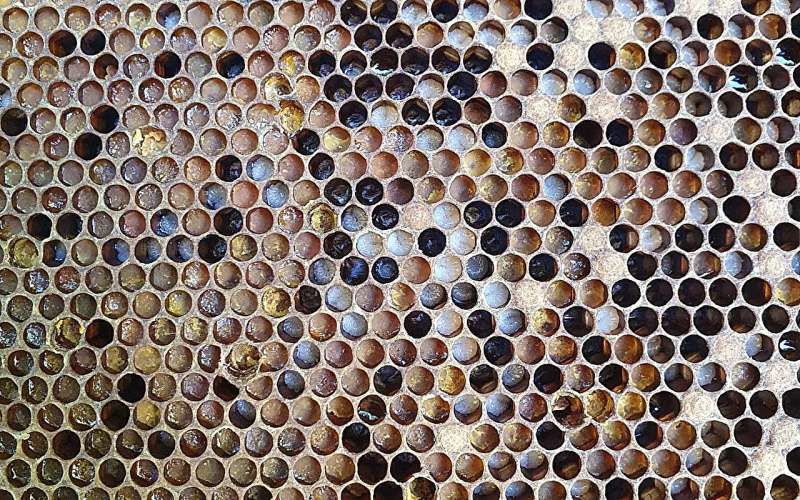This article has been reviewed according to Science X's editorial process and policies. Editors have highlighted the following attributes while ensuring the content's credibility:
fact-checked
peer-reviewed publication
trusted source
proofread
Honeybees are more selective in their choices for nutrition than previously thought

Honeybees have been considered generalists when selecting flowering plants; in other words, they can use a wide range of different plants. However, recent research has shown that honeybees are quite selective.
"Honeybees choose certain plants as their food resources, and these choices differ among time points and, within a time point, even among bee colonies within the same apiary. As an example, at a time point, a colony would collect nectar and pollen mainly from different plants," says Helena Wirta, a researcher from the faculty of Forestry and Agriculture at the University of Helsinki.
"Based on our results, honeybees are more selective than assumed, using only a fraction of available plants. Thus, to fulfill its nutritional needs, it is likely to need a wide selection of plants from which to select suitable ones." The paper is published in the journal Scientific Reports.
Nectar is the main source of carbohydrates for bees, while they obtain protein and fat from pollen. In this study, honey and pollen samples were collected from beehives. DNA was extracted from these samples, and the plant origin of the DNA was determined.
Plant species differ in the protein quantities and in the composition of amino and fatty acids of pollen, as well as in the quantity and composition of sugars in the nectar. Honeybees then select certain plants that provide the nutrients they need. As an example, based on the DNA of the honey and pollen samples used in the study, bees would use raspberries especially in mid- and late summer for nectar, while early in summer they would collect both nectar and pollen from blueberry and cow parsley.
Food security is based on functional pollination
The results of the study are topical considering the reported pollinator declines in recent years. Honeybees are crucial pollinators especially for crop plants, but they are also important pollinators for wild plants. Understanding which plants are important for honeybee nutrition is therefore important to ascertain that a suitable selection of flowers is available throughout the summer.
"We studied managed honeybees, so our results apply especially to crop species pollination, which impacts both the quality and quantity of yields. To ensure food security, including a variety of plants with high nutritional value, we should take these new findings into consideration," says Wirta.
More information: Matti Leponiemi et al, Honeybees' foraging choices for nectar and pollen revealed by DNA metabarcoding, Scientific Reports (2023). DOI: 10.1038/s41598-023-42102-4
Journal information: Scientific Reports
Provided by University of Helsinki

















